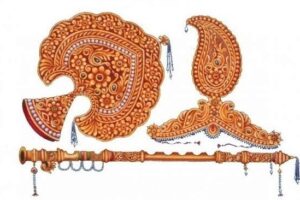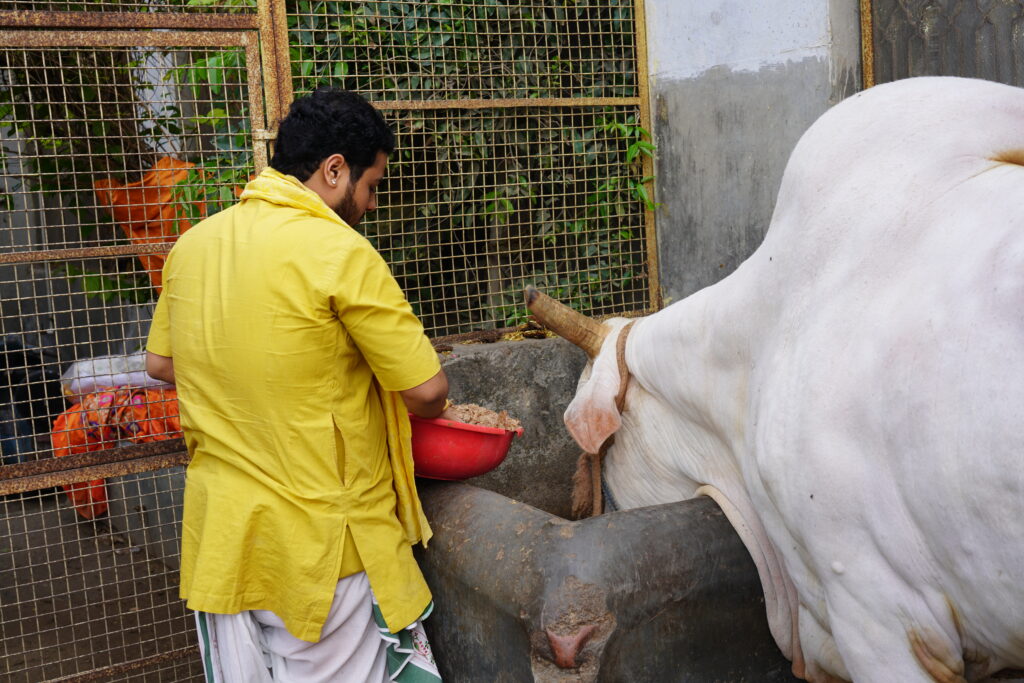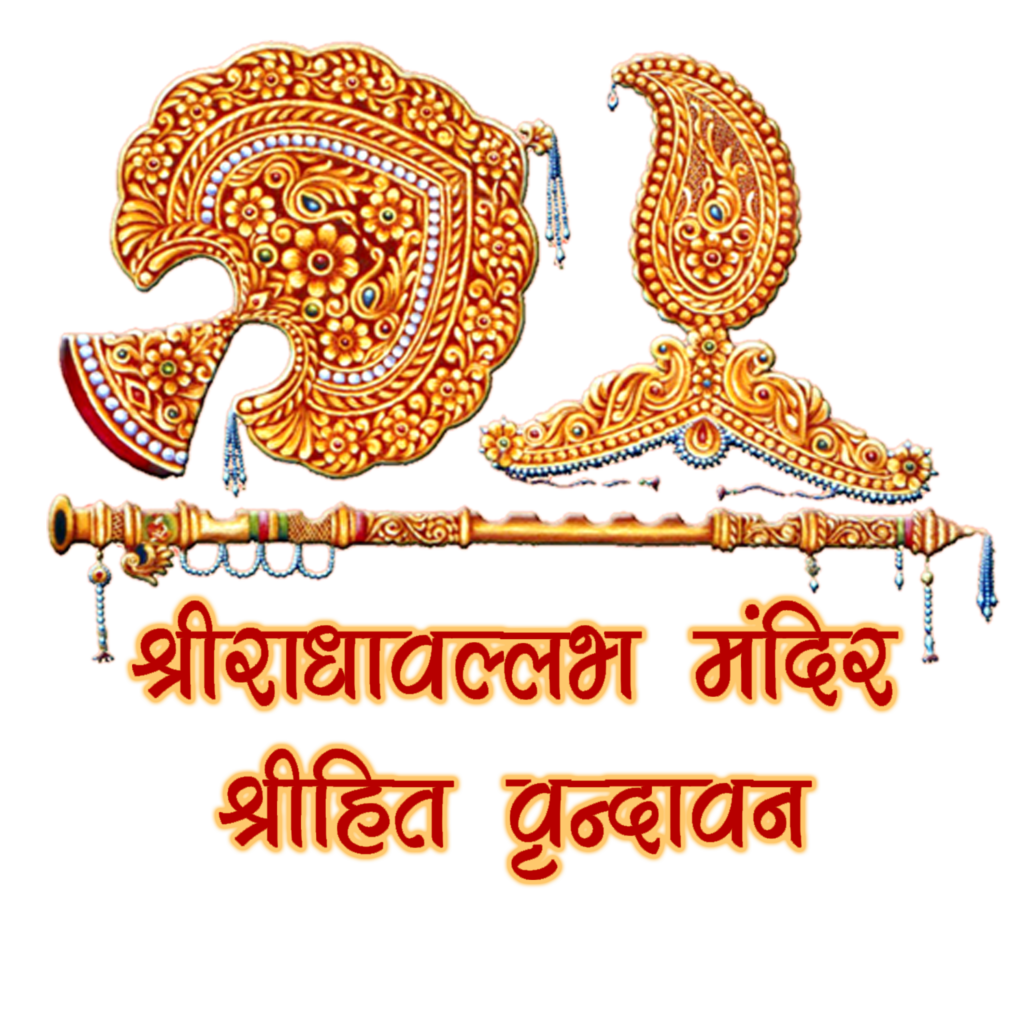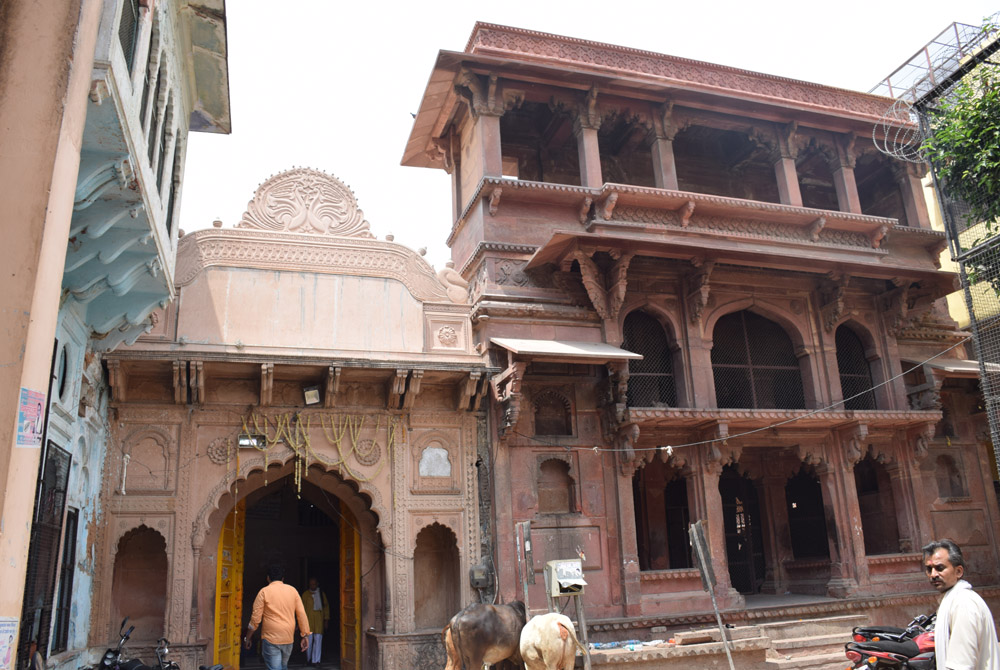ALLIED HOLY PLACES:
Shri RadhaVallabh Temple has I Allied Holy Places connected with it that are held in great reverence and high esteem by the devotees
and must be visited; The Teekayat Adhikari or his Crown Prince (Yuvaraj) would be kind enough to arrange for a guide if someone humbly requests them.
MADAN TER:
One of the first places, where Shri Hit Harivansh Mahaprabhu reached on his arrival at Vrindaban with Shri-Shri RadhaVallabhLalJi, is hardly two kilometers away from the Main Temple. In lush green environment on the bank of Holy Yamuna in the Parikrama Marg (circumambulation path), the place has footprints of Shri Mahaprabhu Ji and the original tree where the Lord came, and rested under the canopy of trees and creepers.
OLD TEMPLE:
Old Temple, reservedly called as “Shri Hit Mandir” by the devotees, is by the side of main gats of the present temple. This temple built in red sandstone, has long attracted favorable attention from visiting archaeologists and art historians.
This temple is an exquisite building and of special architectural interest as the last example of the early eclectic style of the sixteenth century. Wilson noted an inscription over the gateway of this temple, now no longer extant, that it was in 1585 A.D., when this temple was constructed. But F.S. Grows did not found that.
The old RadhaVallabh temple, a unique architectural fabric of medieval centuries, had three aligned spaces: the inner sanctum (garbhagriha); anterior platform (Gag Mohan); and long hall with a high vaulted ceiling (mandap). This temple represents a living dialogue between Hindu and Islamic elements in medieval architecture. The walls having a thickness of 10 feet and are pierced in two stages, the upper stage is being a regular Triforium to which access was obtained by an internal staircase. This Triforium is a reproduction of Mohammad an design, while the work, both upper and below, is purely Hindu In fact this temple is the last temple in the neighborhood in which a naive was built at all. In the modern style, it is so completely obsolete that its distinctive name is even forgotten by some architects.
The temple is characterized by its architectural accent on harmony of lines and balanced massing. It reflects constructional unity more than richness of ornamentation. If in any art it were possible to revive the dead, or if it were in human nature ever to return absolutely upon the past, this style of this temple would seem to be the one for our architects to copy.
The Farman’s and correspondence of Abdul Rahim Khankhana, the Dewan at Emperor Akbar’s court with Sundardas Bhatnagar of Deoband, who constructed this temple, reveal clearly that Abdul Rahim Khankhana not only got Royal permission from the Emperor to use red sandstone for construction of this temple but also monetary grant for the purpose.
Till then red sandstone was used only for Construction of Royal buildings, palaces and forts. It is said that Raja Mansingh first desired to construct this temple. But they say there was a legend that whosoever will construct this temple will die within a year. So Raja Mansingh backed out and Sunderdas Bhatnagar with his personal funds, as well as help through Abdul Rahim Khankhana, got it constructed and died within a year. He was Treasurer (Khazanchi) of Abdul Rahim Khankhana.
The temple though survived destruction at the hand of marauders, is still a piece of harmony-its architecture symbolizing a concrete objectification of the unity and synthesis which formed a peculiar keystone of India’s composite culture, besides having its religious and historical importance for hundred and thousand of devotees of the sect.
PRABHU VANCHANDRA JI KI DOL:
Very nearer to the Shri RadhaVallabh Temple, towards Holy Yamuna, is Prabhu Vanchandraji ki Dol. Prabhu Goswami Vanchandraji was the eldest son of Shri Hit Harivansh Mahaprabhu. At this place, Raas Leelanukaran (performance of various divine acts of Shri Radhikaji and Shri Krishna by devotional religious performers) could be witnessed daily. The place is revered by each and every devotes. The place must be visited at the time of Dadhi Kando during Radhaashtami, by the Goswamis. It is from this place that the Lord accompanied by Shri Radhikaji and Her maids ride on the occasion of Holy.





